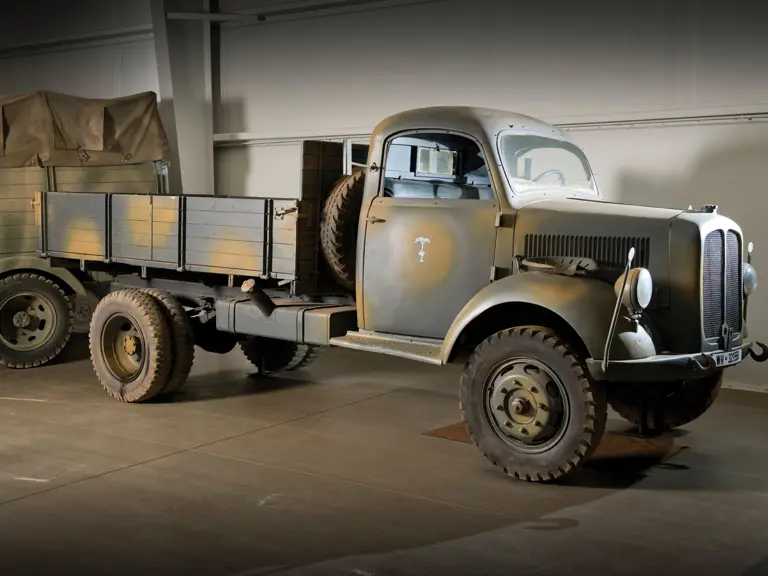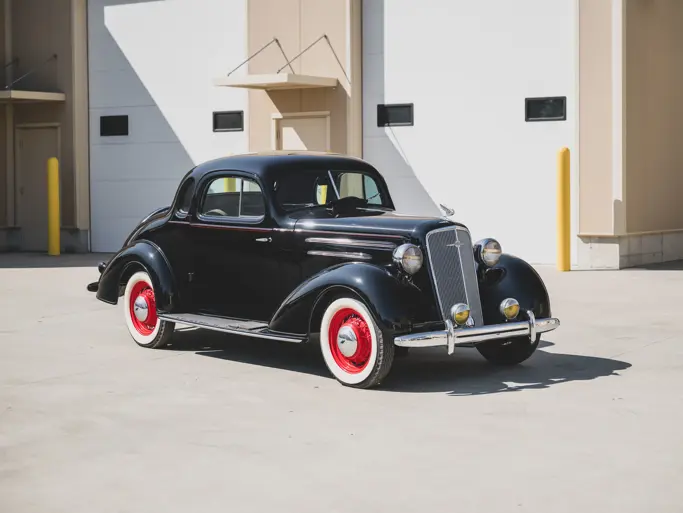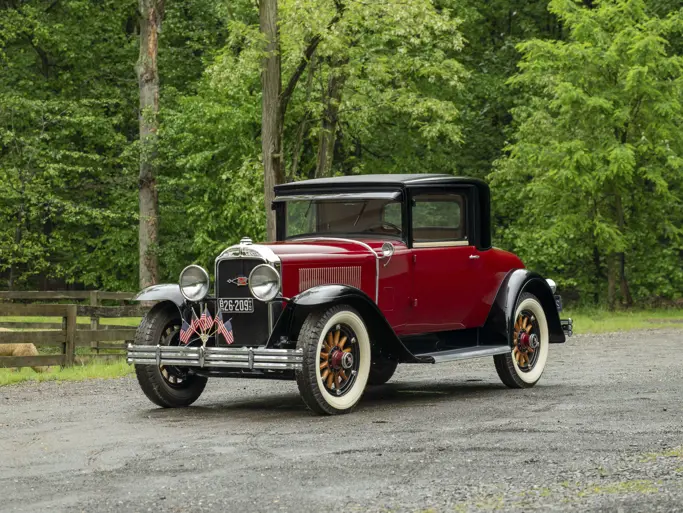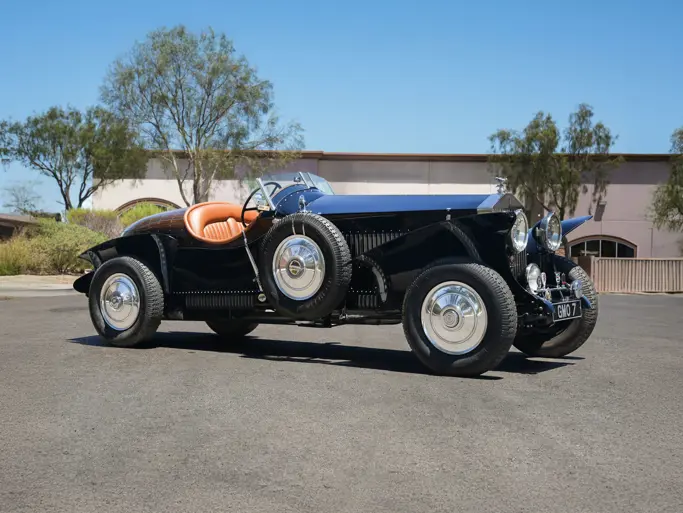Please Note: Information regarding these museum display vehicles was provided by the National Military History Center and has not been independently verified by Auctions America by RM ("AA"). As such, AA does not verify, warrant or guarantee any of this information. Prior inspection and research by the buyer is highly encouraged and recommended.
ATTENTION: Buyers are responsible for securing transportation and moving/loading of lots. Lot may be left on display indefinitely in the museum free of charge with a signed loan agreement form. Lots are sold as is, where is.
Please note this is being sold on "Bill of Sale" only.
Manufacturer: Carl F.W. Borgward GmbH, Bremen
Production Years: 1939-1944
Engine: Borgward, 3.7-liter, 78-hp, six-cylinder, liquid-cooled, gasoline
Transmission: 5F1R
Brakes: Hydraulic
Length: 21-feet, 6-inches
Width: 7-feet, 8-inches
Height: 9-feet, 9-inches (to top of cargo area bonnet)
Weight: Approximately 3.6-tons
Armor: None
Armament: NONE on this example - Could be fitted with a 7.92-mm MG34 or MG42 machine gun
Maximum speed: Approximately 50-mph
Wheelbase: 148-inches
Markings: German Afrika Korps, Engineer Battalion
The Borgward B3000S/O, 4x2, 3-ton represents one of several different manufacturers’ standardized military truck models that were developed from guidelines established by the Schell-Program. In 1938, General Adolf von Schell, Director of Motorization for the Wehrmacht (German military), proposed to cut back procurement of vehicles of all types to just a few standard chassis. The number was cut from 113 to 30. Truck models were reduced to classes of 1, 1-1/2, 3, 4-1/2 and 6-1/2-tons, most with a basic 4x2 (S-Type) and a 4x4 (A-Type) version. The Borgward B3000 series 4x2 began production in 1939 with two different engine variants, a 75-hp 4.9-liter diesel and, as displayed, a 78-hp 3.7-liter gasoline version. An A-type version (4x4) was also produced beginning in 1940. The Borgward B3000s were not very popular with the German troops. Reports from Russia stated that the clutch slipped so badly that the vehicle could not be driven satisfactorily. The radiator pipes were too short and often came loose on rough roads. The steering could barely operate in cold conditions. In spite of its shortcomings, approximately 30,000 Borgward B3000s were built in several different versions during World War II.



 | Auburn, Indiana
| Auburn, Indiana


